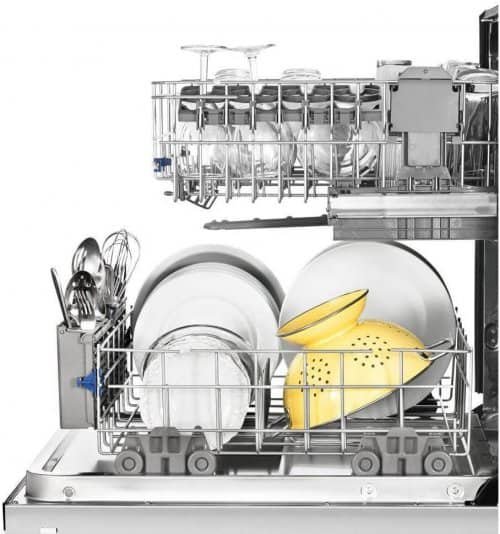If your dishwasher is overflowing, there are a few things you can do to fix it. First, check the dishwasher for any clogs. If there are any clogs, clear them out and try running the dishwasher again. If the dishwasher is still overflowing, check the float switch. The float switch is located near the bottom of the dishwasher and is responsible for stopping the dishwasher from taking in too much water.
Table of Contents
Step 1: identify the cause of dishwasher overflow
If your dishwasher is overflowing, there are three possible causes: a clogged sink, a faulty float switch, or a plugged drain hose. A clogged sink is the most common cause of dishwasher overflow.
If your sink is clogged, water will back up into the dishwasher and cause it to overflow. To fix this problem, you’ll need to clear the clog from your sink. A faulty float switch is another possible cause of dishwasher overflow.
The float switch is responsible for turning the dishwasher off when it gets full of water. If the float switch is faulty, it may not turn the dishwasher off, causing it to overflow.
Finally, a plugged drain hose can also cause your dishwasher to overflow. If the drain hose becomes plugged, water will back up into the dishwasher and cause it to overflow.
Step 2: troubleshoot the problem
If your dishwasher is overflowing, there are a few things you can do to troubleshoot the problem. First, check the float switch to see if it is stuck in the “on” position. If it is, simply push it back down and the overflow should stop.
If the float switch is not the problem, then check the drain hose to see if it is clogged or damaged. If so, replace or repair the hose and that should fix the issue. Finally, if neither of those solutions work, you may have a faulty pump or timer and will need to call a repairman.
Step 3: fix the dishwasher overflow
If your dishwasher is leaving water on the floor after a cycle, it’s likely due to an overflow. An overflow can be caused by a few different things, but the most common is a blocked drain. If you have a dishwasher overflow, don’t panic! It’s relatively easy to fix. To fix a dishwasher overflow, start by checking the drain for any blockages.
If there are none, then the next step is to check the float switch. The float switch is located in the bottom of the dishwasher and is responsible for turning off the water when it reaches a certain level. If the float switch is not working properly, it will allow water to continue running even when the dishwasher is full, causing an overflow.
Step 4: prevent future dishwasher overflow
To prevent a future dishwasher overflow, it is important to take some preventative measures. First, make sure that your dishwasher is properly installed and that the drain hose is not kinked. Second, clean your dishwasher regularly to remove any buildup of food or grease that could clog the drain.
Finally, run your dishwasher on a regular basis to keep the seals and gaskets from drying out and cracking. If you do experience an overflow, be sure to shut off the water supply to your dishwasher and call a plumber as soon as possible.
What is Dishwasher Overflow Valve?
If you have a dishwasher, you know that they can be lifesavers. But what do you do when your dishwasher overflows? This can be a common problem, but luckily there is an easy fix.
First, you will want to locate the overflow valve. This is usually located near the bottom of the dishwasher on the back wall. Once you have found it, you will want to turn it clockwise to close it. If your dishwasher has an adjustable feet, you will want to raise it up so that the water can drain out.
If your dishwasher does not have an adjustable feet, you may need to remove the drain hose from the back of the machine. Once you have done this, place a bowl or bucket under the hose and allow the water to drain into it.

What is Dishwasher Overflow Drain?
If you’ve ever had water spilling out of your dishwasher, it’s likely because of an overflow drain. This can be a tricky problem to fix, but with some patience and the right tools, it’s definitely doable.
The first thing you’ll need to do is locate the overflow drain. This is usually located near the back of the dishwasher, near the floor. Once you’ve found it, use a flashlight to take a look inside. If there’s anything blocking the drain, such as food particles or grease, you’ll need to remove it.
Once the drain is clear, run some hot water down it to make sure it’s flowing freely. If everything looks good, reassemble your dishwasher and turn it on. Hopefully, that will take care of the problem!
Conclusion:
If your dishwasher is overflowing, there are a few things you can do to fix the issue. First, check the float switch and make sure it is not stuck in the up position. Second, check the drain hose for any kinks or blockages. Finally, check the water inlet valve to make sure it is not clogged or frozen. If you have followed these steps and the dishwasher is still overflowing, you may need to call a plumber.

